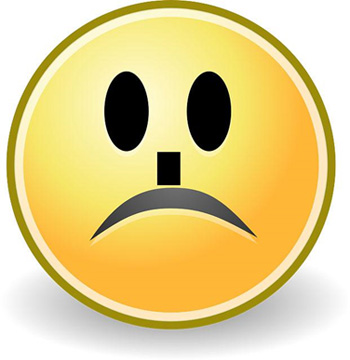The Problem With Calling Donald Trump A Nazi

A message to the people painting swastikas on Donald Trump signs this fall: We're gonna need you to be more specific. Through no fault of your own, your painting a swastika on this particular person is sending an ambiguous message to the rest of us. Don't wad up and burn your degree in communications just yet, anyone could have made this mistake. This is the first time in the history that viewers have no idea whether the swastikas painted on a candidate's sign are meant to praise or criticize him.

Even more confusing: The owners of this store and sign they vandalized are Jewish.
It's easy to see why you'd think a swastika spoke loud and clear. Comparing Hitler to any politician during the past 71 years has been considered a pretty clear insult. Stretching all the way back to the Nixon Administration, comparing a US political figure to Hitler has been an edgier way for aging hippies and lazy twenty-somethings to say "I disagree with this political figure and can't think of a new metaphor." It's the biggest "fuck you" we have.
Similarly, spray painting a swastika on 99.9% of the objects in the world also sends a clear message: you love white power so much you're doing guerilla marketing for it.

"Scan this photo to unlock our ARG and go even deeper!"
It's a way for people to shout to the world that they belong to a group that thinks the Holocaust didn't happen and also wasn't such a bad thing.
Yet for the first time in the history of American politics, Nazi iconography is being invoked both by the people who view it as an insult and people who view it as a merit badge; each using it to show support for their respective cause. Two completely different uses of an emotionally-charged symbol have collided, creating a semantic clusterfuck of heretofore unparalleled proportions. Here's the truck of an avid Trump supporter:

And here's an anti-Trump sign:
And now there are a bunch of acts of graffiti and internet art whose meanings are officially undecipherable:
The law of entropy tells us that once two meanings have been mixed, they can never be unmixed. (Sorry meaning purists.) In this election, the different intentions behind these swastikas have become so entangled that if you tried to use a swastika sarcastically it would create a semantic black hole that would rip apart the semiotic-time continuum. To avoid this, the swastika should no longer be used by either side. Instead, we have a couple of suggestions for each group. For liberal critics of Mr. Trump, even a frowny face would be a more effective way to communicate your disapproval. Sure, it lacks the gut-punch quality of a swastika but remember that to a disturbingly large proportion of the electorate, that's a gut-punch of joy. Perhaps this is a nice compromise:

On the White Nationalist side, perhaps adding a thumbs up next to the swastika or Hitler 'stache, or maybe giving the swastika a cool pair of sunglasses would do the trick. We hate to help this side with their messaging but for the sake of clearly identifying these people, we made this for you:

Hopefully at least now we'll at least be on the same page as to who is hating who.

